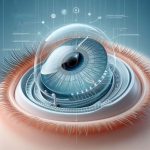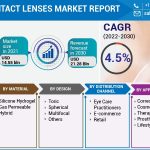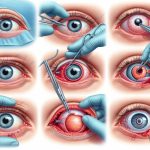This website uses cookies so that we can provide you with the best user experience possible. Cookie information is stored in your browser and performs functions such as recognising you when you return to our website and helping our team to understand which sections of the website you find most interesting and useful.

Understanding Corrective Contact Lenses and Addressing Presbyopia
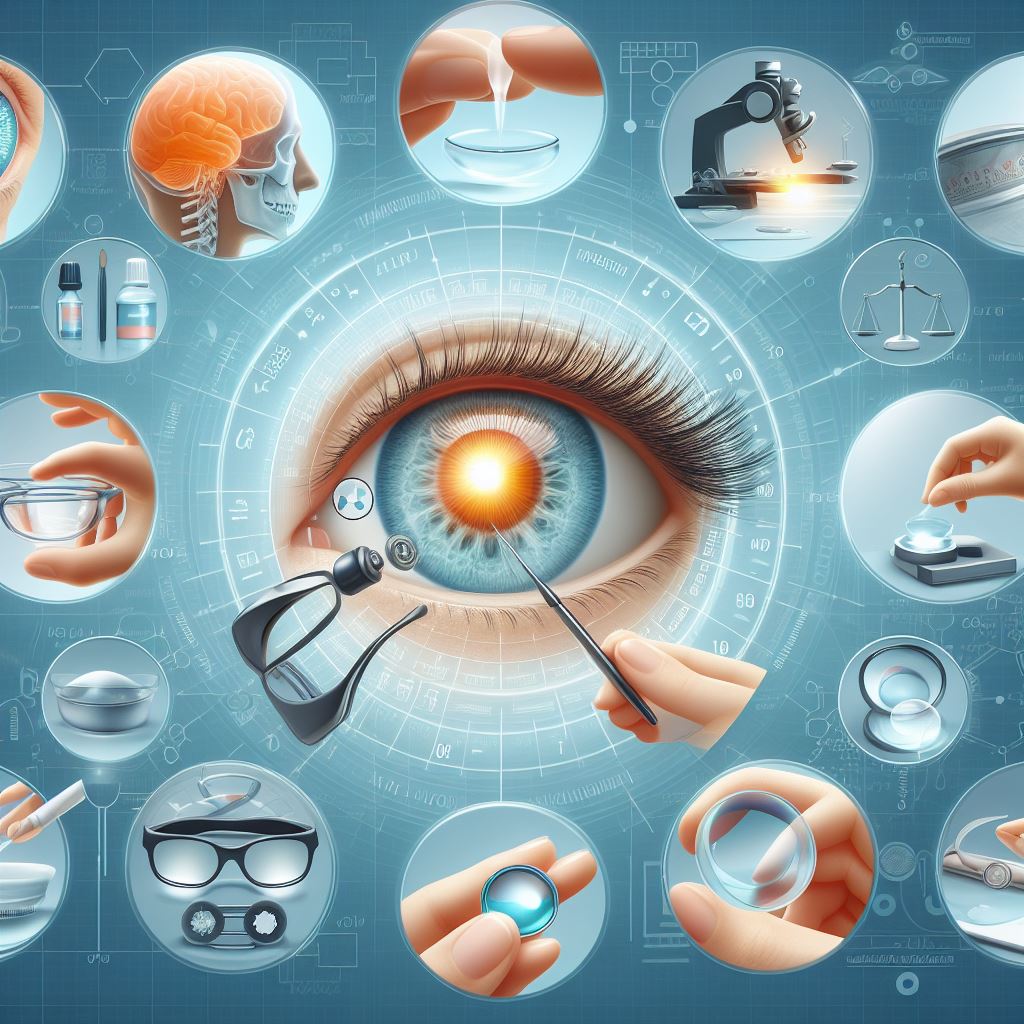
Corrective contact lenses are optical devices designed to improve vision by precisely focusing light onto the retina, compensating for refractive errors and enhancing visual acuity. Let’s explore how these lenses work and their specific role in addressing presbyopia.
Corrective Contact Lenses: Improving Vision
Refractive Error Correction
The primary function of corrective contact lenses is to address refractive errors, including myopia (nearsightedness), hyperopia (farsightedness), astigmatism, and presbyopia. These lenses alter the way light enters the eye, ensuring it converges properly on the retina.
Myopia Correction
For individuals with myopia, where distant objects appear blurry, corrective lenses diverge incoming light, allowing it to focus accurately on the retina. This correction enables clear vision of objects at a distance.
Hyperopia Correction
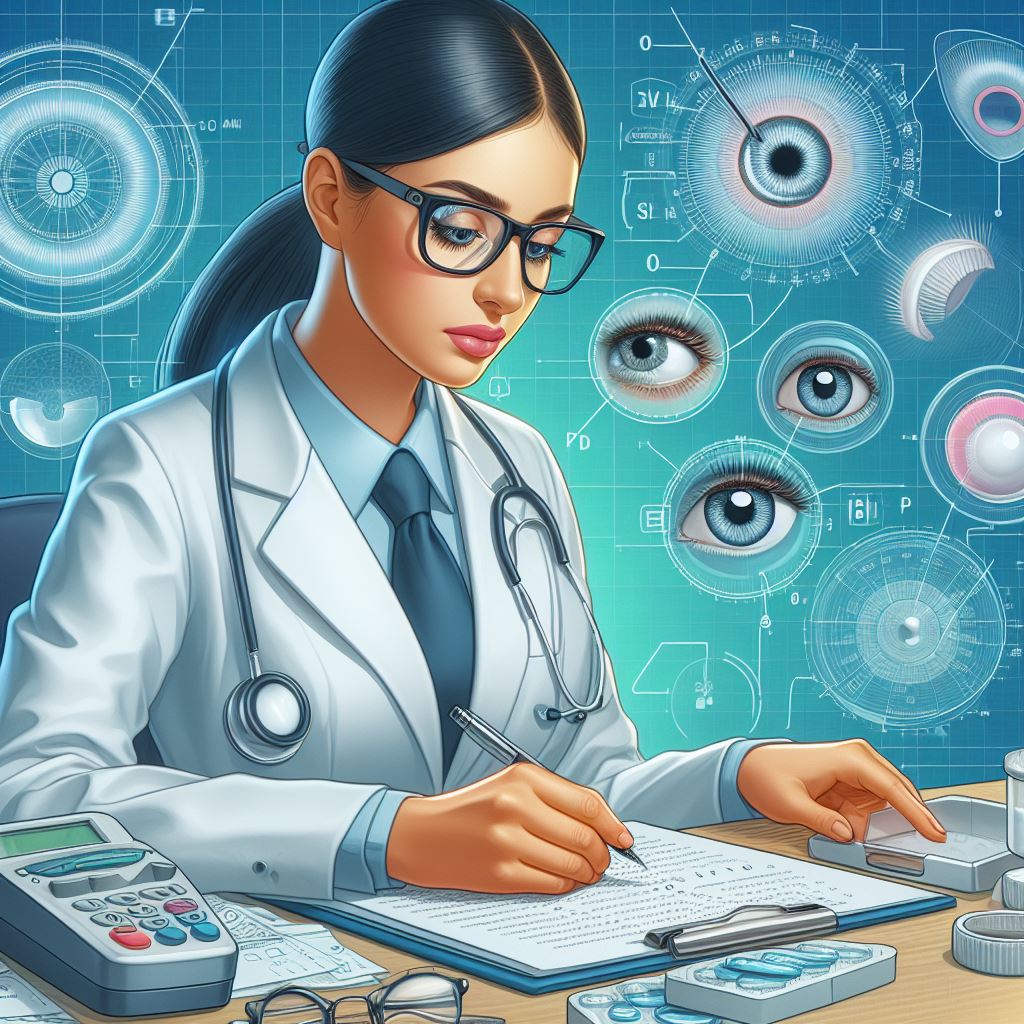
In hyperopia, near objects may be blurry due to the focal point falling behind the retina. Corrective lenses for hyperopia converge light rays, bringing the focal point forward and facilitating clear vision of close-up items.
Astigmatism Correction
Astigmatism arises from an irregularly shaped cornea or lens, causing distorted vision. Toric lenses, a type of corrective lens, compensate for this irregularity, ensuring proper light refraction for clear and sharp vision.
Addressing Presbyopia
Overview of Presbyopia

Presbyopia is a natural aging process affecting the eye’s ability to focus on close-up objects. As the eye’s crystalline lens loses flexibility, near vision becomes challenging. Corrective lenses play a vital role in managing presbyopia.
Bifocal and Multifocal Lenses
Traditional bifocal lenses have distinct zones for near and far vision. The lower part aids close-up tasks, while the upper part assists with distance vision. Multifocal lenses, including progressive lenses, offer a seamless transition between near and far vision, providing a more natural visual experience.
Monovision Approach
In the monovision technique, one eye is corrected for distance vision, while the other addresses close-up tasks. This approach leverages the brain’s ability to adapt and seamlessly switch between the eyes for various distances.
Advanced Technological Solutions
Advancements in lens technology have led to innovative solutions for presbyopia. Multifocal and accommodating lenses aim to provide a broader range of vision, minimizing the need for constant lens adjustments.
Corrective contact lenses represent a versatile and effective means of improving vision by precisely managing light refraction. Whether addressing common refractive errors or managing presbyopia, these lenses contribute significantly to enhancing visual acuity and overall eye health. Stay informed about emerging technologies and consult with eye care professionals to explore the best options for your specific vision needs.
Frequently Asked Questions About Corrective Contact Lenses
What are corrective contact lenses?
A: Corrective contact lenses are specially designed lenses to address refractive errors like myopia (nearsightedness), hyperopia (farsightedness), astigmatism, and presbyopia. They provide clear vision by altering the way light enters the eyes.
How do corrective contact lenses work?
A: These lenses alter the path of light entering the eyes, compensating for the refractive error. For example, convex lenses help converge light for myopia, while concave lenses diverge light for hyperopia.
Can corrective contact lenses treat presbyopia?
A: Yes, multifocal contact lenses are a type of corrective lenses designed to address presbyopia, providing clear vision for both near and far distances.
Are there different types of corrective contact lenses?
A: Yes, there are various types, including soft lenses, rigid gas permeable (RGP) lenses, toric lenses for astigmatism, and multifocal lenses for presbyopia.
How are corrective contact lenses prescribed?
A: An eye care professional prescribes corrective contact lenses based on a comprehensive eye examination, including a refraction test to determine the specific vision correction needed.
Can anyone wear corrective contact lenses?
A: In general, many individuals can wear corrective contact lenses, but it depends on factors like eye health, lifestyle, and individual preferences. An eye care professional can guide on suitability.
Are there age restrictions for wearing corrective contact lenses?
A: Corrective contact lenses can be suitable for various age groups, including children and older adults. The decision depends on individual eye health and the ability to handle and care for the lenses.
How often should corrective contact lenses be replaced?
A: Replacement frequency varies depending on the type of contact lenses. Daily disposables are replaced daily, while other types may have different schedules, such as bi-weekly or monthly replacements.
Do corrective contact lenses require special care?
A: Yes, proper hygiene is crucial. Cleaning, disinfecting, and storing lenses as per the eye care professional’s instructions help prevent infections and ensure optimal vision correction.
Can corrective contact lenses be worn during sports and physical activities?
A: Yes, many people prefer contact lenses for sports as they provide a wider field of view and are less prone to fogging compared to glasses. However, choosing the right type depends on the activity and personal comfort.
Frequently Asked Questions About Presbyopia
What is presbyopia?
A: Presbyopia is an age-related condition that affects the eye’s ability to focus on close objects. It commonly occurs around the age of 40, resulting in difficulty reading or performing tasks requiring near vision.
What causes presbyopia?
A: The primary cause of presbyopia is the natural aging process, specifically changes in the eye’s crystalline lens. As the lens loses flexibility, it becomes challenging to adjust focus for close-up vision.
How does presbyopia differ from other refractive errors?
A: While myopia, hyperopia, and astigmatism affect distance vision, presbyopia specifically impacts near vision. It is a separate condition but can coexist with other refractive errors.
What are the symptoms of presbyopia?
A: Common symptoms include difficulty reading small print, eye strain, headaches during close work, and the need to hold reading material at arm’s length.
Can presbyopia be prevented?
A: Presbyopia is a natural part of aging, and prevention is not possible. However, maintaining overall eye health through regular check-ups can help detect and address presbyopia early.
How is presbyopia diagnosed?
A: An eye care professional can diagnose presbyopia through a comprehensive eye examination, which may include a visual acuity test and a refraction assessment.
Are there different treatment options for presbyopia?
A: Yes, common treatments include reading glasses, bifocals, progressive lenses, and multifocal contact lenses. Refractive surgeries like LASIK or lens replacement may also be considered.
Do all people experience presbyopia?
A: Yes, presbyopia is a natural part of aging, and virtually everyone will experience some degree of it after reaching their 40s.
Can presbyopia be corrected with contact lenses?
A: Yes, multifocal contact lenses are designed to address presbyopia, providing clear vision for both near and far distances.
Is surgery an option for presbyopia?
A: Refractive surgeries like monovision LASIK or lens replacement surgeries may be considered for presbyopia, depending on individual circumstances. It’s essential to consult with an eye care professional to explore suitable options.

